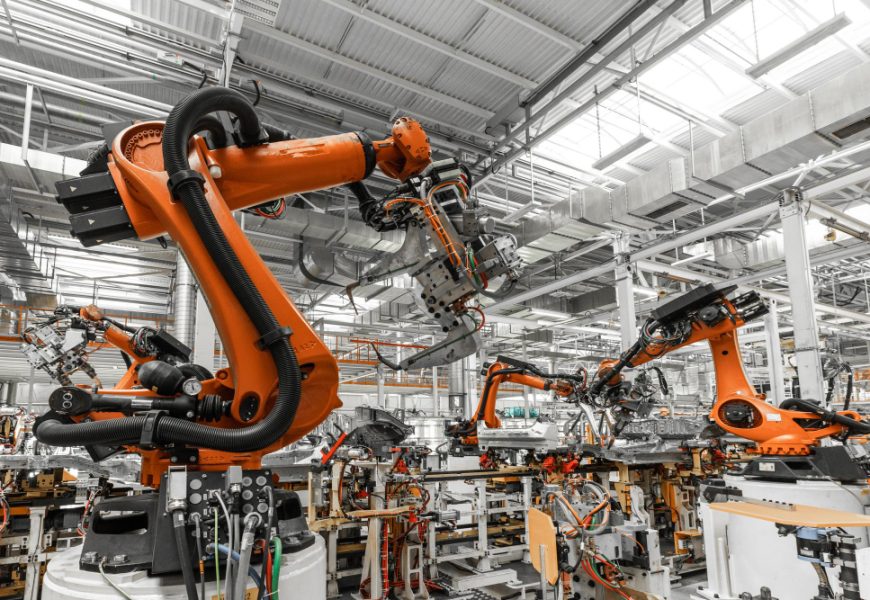The manufacturing industry is undergoing a profound transformation driven by technological advancements. At the heart of this evolution lies the integration of IT services and the Internet of Things (IoT), which is revolutionizing production processes, enhancing efficiency, and enabling smarter operations. The fusion of IT services for manufacturing with IoT technologies offers unparalleled opportunities to optimize resources, predict maintenance needs, and improve product quality. Moreover, innovations like the digital twin in manufacturing further amplify the benefits of these integrations, enabling real-time simulations and data-driven decision-making.
Understanding the Role of IT Services in Manufacturing
IT services play a pivotal role in modern manufacturing by bridging traditional industrial processes with advanced technologies. From cloud computing to cybersecurity and enterprise resource planning (ERP), IT services are the backbone of connected and intelligent manufacturing ecosystems. By enabling seamless communication between machines, devices, and systems, IT services ensure that data flows effectively throughout the manufacturing lifecycle.
Key Contributions of IT Services:
- Enhanced Connectivity:
IT services enable the integration of IoT devices, ensuring smooth communication between sensors, machines, and cloud platforms. This connectivity is essential for real-time monitoring and data collection. - Data Management and Analytics:
Manufacturers generate vast amounts of data. IT services provide the infrastructure to store, analyze, and derive actionable insights from this data, optimizing operations and reducing waste. - System Integration:
IT services integrate disparate manufacturing systems, including production, inventory, and quality control, into a unified ecosystem. This holistic view enhances decision-making and operational efficiency. - Cybersecurity:
With IoT devices increasing the attack surface, robust IT services ensure that manufacturing environments remain secure from cyber threats.
IoT in Manufacturing: Revolutionizing Production
IoT is a cornerstone of modern manufacturing, enabling the creation of smart factories where machines, sensors, and devices communicate seamlessly. These smart factories rely on IoT to automate processes, monitor production in real time, and reduce downtime.
IoT Applications in Manufacturing:
- Predictive Maintenance: IoT sensors monitor equipment performance, predicting failures before they occur. This reduces downtime and lowers maintenance costs.
- Quality Control: IoT devices ensure consistent product quality by tracking parameters such as temperature, humidity, and pressure in real time.
- Supply Chain Optimization: IoT facilitates end-to-end visibility in the supply chain, improving inventory management and logistics.
- Energy Management: IoT solutions monitor energy usage, enabling manufacturers to optimize consumption and reduce costs.
The Synergy of IT Services and IoT
The integration of IT services for manufacturing with IoT creates a powerful synergy, driving innovations like smart factories and connected supply chains. This collaboration not only streamlines operations but also empowers manufacturers to respond swiftly to market demands and disruptions.
Benefits of IT-IoT Integration:
- Real-Time Data Processing:
IoT devices collect vast amounts of data, which IT services process and analyze in real time. This enables manufacturers to make informed decisions quickly. - Scalable Infrastructure:
IT services provide the cloud infrastructure needed to support IoT devices. This scalability ensures that manufacturers can adapt to changing demands without major overhauls. - Improved Collaboration:
IT-IoT integration fosters collaboration across departments by providing a unified platform for sharing insights and coordinating actions. - Enhanced Customer Experience:
By leveraging data from IoT devices, manufacturers can produce customized products, improving customer satisfaction and loyalty.
The Role of Digital Twin in Manufacturing
A standout innovation in the IT-IoT integration is the digital twin in manufacturing. Digital twins are virtual replicas of physical assets, systems, or processes, enabling manufacturers to simulate, analyze, and optimize their operations in real time.
How Digital Twin Works:
Digital twins collect data from IoT sensors embedded in physical assets. This data is then used to create a virtual model that mirrors the real-world counterpart. Manufacturers can interact with this model to predict outcomes, identify inefficiencies, and test scenarios without impacting actual operations.
Benefits of Digital Twin in Manufacturing:
- Predictive Maintenance:
Digital twins use real-time data to predict when equipment will require maintenance, reducing downtime and improving efficiency. - Process Optimization:
By simulating manufacturing processes, digital twins help identify bottlenecks and optimize workflows. - Improved Product Development:
Manufacturers can use digital twins to test prototypes virtually, reducing development costs and time-to-market. - Sustainability:
Digital twins enable manufacturers to simulate energy usage and emissions, helping them adopt more sustainable practices.
Real-World Applications of Digital Twin:
- Automotive Manufacturing:
Automotive manufacturers use digital twins to simulate assembly lines, ensuring seamless integration of new models. - Aerospace Industry:
Digital twins help simulate and monitor the performance of critical components in aircraft manufacturing. - Smart Factories:
Many smart factories leverage digital twins to monitor equipment performance and optimize energy consumption.
Challenges in IT-IoT Integration
While the integration of IT services with IoT offers numerous benefits, it also presents challenges:
- Data Security:
The increased connectivity of IoT devices poses significant cybersecurity risks. IT services must implement robust security measures to protect sensitive data. - Interoperability:
Integrating legacy systems with modern IoT technologies can be complex and requires careful planning. - Scalability:
Managing a large number of IoT devices and ensuring consistent performance requires scalable IT infrastructure. - Cost:
The initial investment in IT-IoT integration can be substantial, although the long-term benefits often outweigh these costs.
The Future of IT and IoT in Manufacturing
The integration of IT services for manufacturing with IoT is only the beginning of a broader digital transformation. Emerging technologies like artificial intelligence (AI), blockchain, and 5G are poised to further enhance this synergy.
- AI-Driven Insights:
AI algorithms can analyze IoT data more effectively, providing deeper insights into manufacturing processes. - Blockchain for Supply Chain Transparency:
Blockchain can enhance the traceability of products and materials in the supply chain, ensuring authenticity and reducing fraud. - 5G Connectivity:
The rollout of 5G networks will improve the speed and reliability of IoT device communication, enabling real-time operations on a larger scale.
Conclusion
The integration of IT services with IoT is transforming modern manufacturing, driving efficiency, innovation, and sustainability. By leveraging technologies like the digital twin in manufacturing, companies can gain real-time insights, optimize processes, and remain competitive in an increasingly connected world.
As manufacturers continue to adopt these technologies, the collaboration between IT and IoT will become even more critical, laying the foundation for smarter, more efficient, and more sustainable manufacturing practices.








